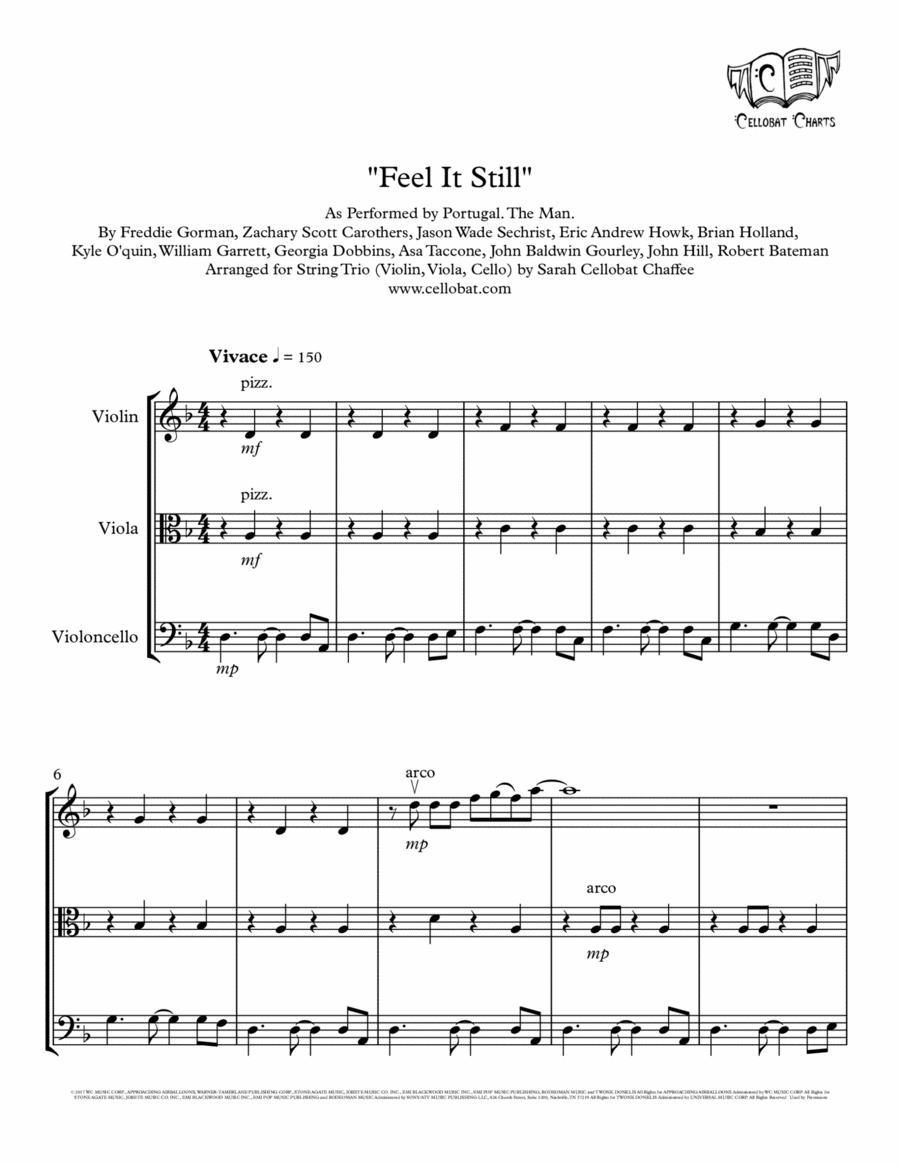String Trio Cello,Viola,Violin - Level 3 - Digital Download SKU: A0.1138534 By Portugal. The Man. By Asa Taccone, Brian Holland, Eric Andrew Howk, Freddie Gorman, Georgia Dobbins, Jason Wade Sechrist, John Baldwin Gourley, John Hill, Kyle O'Quin, Robert Bateman, William Garrett, and Zachary Scott Carothers. Arranged by Sarah Cellobat Chaffee. Contemporary,Pop,Rock,Wedding. 14 pages. Sarah Cellobat Chaffee #738876. Published by Sarah Cellobat Chaffee (A0.1138534). *INSTRUMENTATION: VIOLIN, VIOLA, CELLO* Feel It Still was released in 2017 by the band Portugal. The Man., and it was not immediately a hit -- but word got around, and after a few months, it reached the top 5 on the Billboard charts! It has since reached number one on six of the major charts and received a Grammy award, and it's now considered one of the band's signature songs; if you've turned the radio on at all in the last few years, this one was impossible to miss. So you can't go wrong adding this to your gig books! This Cellobat arrangement for your violin/viola/cello trio truly does this monumental song justice; maintaining the original's catchy melodies, unexpected form, back-and-forth lines, and danceable beat, this chart will definitely be as much fun to play as it is to listen to. This will be perfect for weddings, parties, cocktail hour, private events, solo & ensemble contest, or any other occasion you need to get your audience singing along! Rated intermediate; this will be playable for students and easily sightreadable for professionals. Sarah âCellobatâ Chaffee is an in-demand acoustic & electric cellist and string arranger. Currently, she performs with legendary rock band Aerosmith in their âDeuces Are Wildâ residency show, and she is the principal cellist for the Raiders House Band, playing for a crowd of 60,000 at all of the team's home games. She also plays with many other groups including Premiere Wedding Music, Bella Electric Strings, the Femmes Of Rock, and David Perricoâs Pop Strings Orchestra. Sarah has performed and recorded with numerous other artists including Disturbed, Mötley Crüe, Celine Dion, Halsey, Michael Bublé, Sarah Brightman, and Lady A. She is the exclusive arranger for a number of award-winning wedding and event companies all across the United States, including Premiere Wedding Music, Las Vegas Music Oasis, and Impulse Strings, and she has created custom arrangements for many other ensembles all over the world. You can find her at:http://www.cellobat.comhttp://www.instagram.com/cellobathttps://www.youtube.com/@Cellobat.
